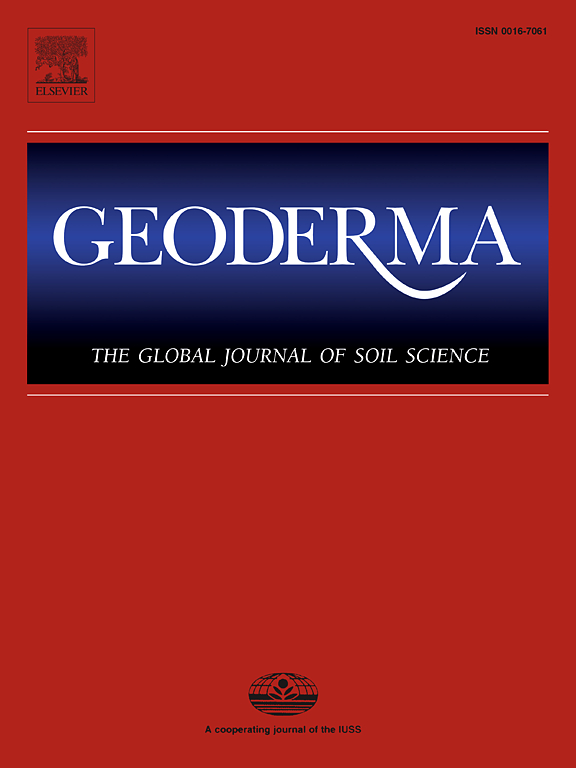A novel potential outlier recognition approach considering local heterogeneity enhancement to improve the quality of soil datasets
IF 5.6
1区 农林科学
Q1 SOIL SCIENCE
引用次数: 0
Abstract
Soil datasets, including soil sample data and soil map products, often contain outliers that can lead to inaccurate modeling and analysis of various soil-related issues. Existing methods for identifying potential outliers in soil datasets rely on simple statistical approaches and tend to overlook the geographical characteristics of the soil. Local indicators of spatial association (LISA) can address this limitation by examining the local spatial structures inherent in soil data. However, distinguishing some outliers remains challenging because of the varying levels of heterogeneity across different soil regions. In this paper, we present a novel method for recognizing potential outliers through local heterogeneity enhancement, which is aimed at improving the quality of soil datasets. In this method, stratified soil variations are first balanced to mitigate the effects of spatial discrepancies in different soil regions. Second, local heterogeneity enhancement is conducted to modify the outlier scores associated with abnormal soils exhibiting low heterogeneity. Third, a frequency histogram of outlier scores is applied to determine a suitable threshold at which to recognize potential abnormal values in soil datasets. To validate the proposed method, it was compared with the LISA and box-plot methods. Simulation data and soil data were adopted in the experiment, incorporating two types of irregular points and spatially continuous surfaces. The comparative experiments demonstrated that the proposed method more effectively identifies potential outliers by analyzing and balancing the local spatial structure of the soil than traditional methods do. It can be concluded that local heterogeneity enhancement is beneficial for recognizing potential outliers in soil datasets.
求助全文
约1分钟内获得全文
求助全文
来源期刊

Geoderma
农林科学-土壤科学
CiteScore
11.80
自引率
6.60%
发文量
597
审稿时长
58 days
期刊介绍:
Geoderma - the global journal of soil science - welcomes authors, readers and soil research from all parts of the world, encourages worldwide soil studies, and embraces all aspects of soil science and its associated pedagogy. The journal particularly welcomes interdisciplinary work focusing on dynamic soil processes and functions across space and time.
 求助内容:
求助内容: 应助结果提醒方式:
应助结果提醒方式:


